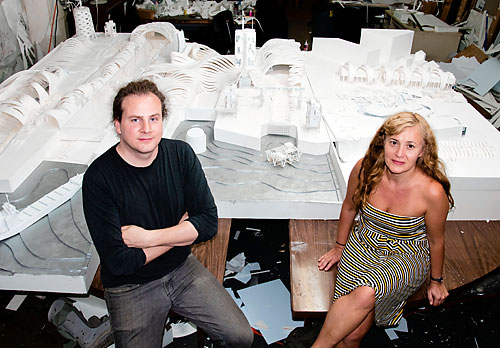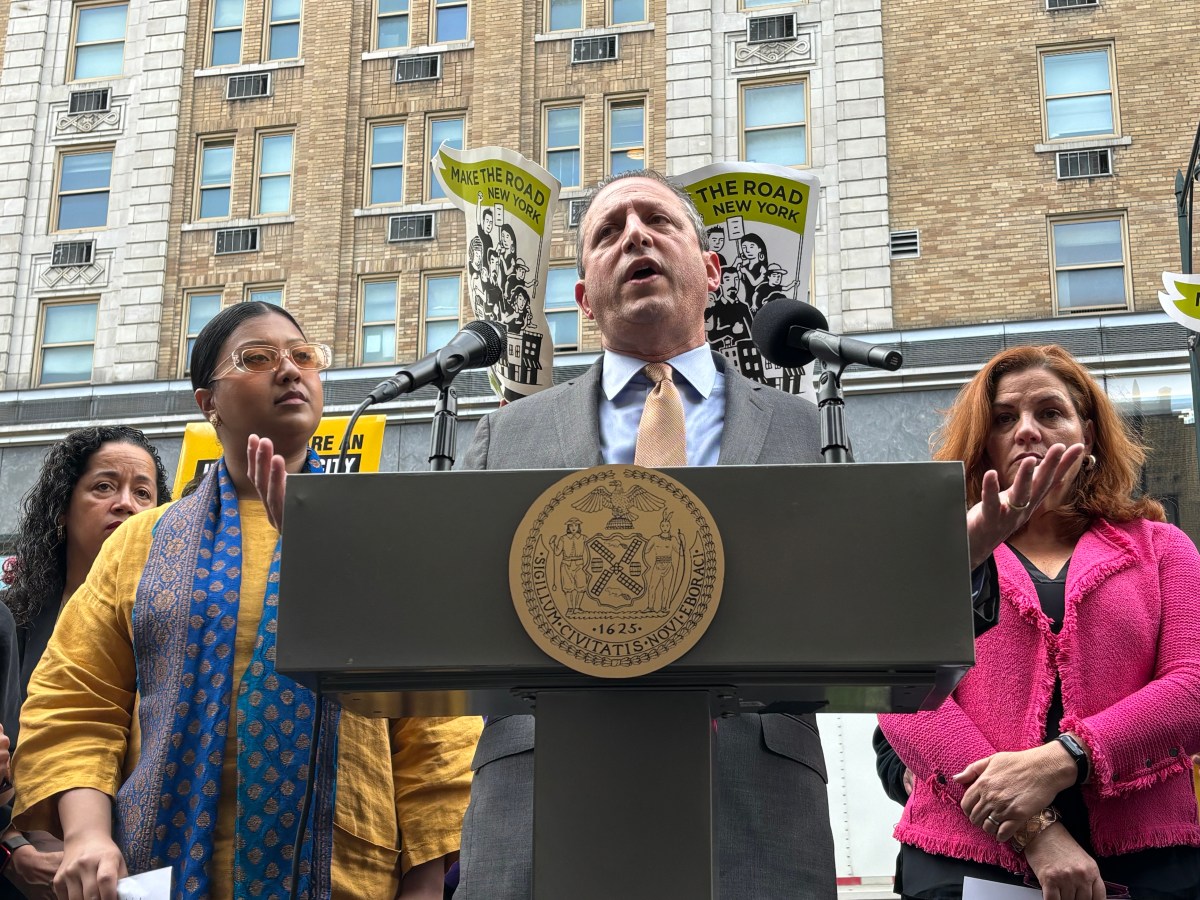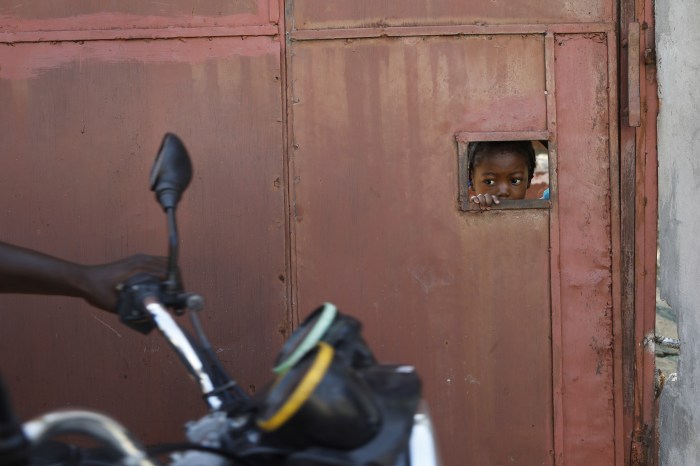Curved buildings with mushroom roofs! Giant 3D printers spewing out ships! Swarms of high-tech workers making electric cars!
It’s all part of “Super Dock,” a futuristic science park designed by radical eco-architects Mitchell Joachim, Maria Aiolova and Nurhan Gokturk of Planetary One, an urban design firm on Flatbush Avenue.
“There are no walls,” Joachim said. “We’re merging architecture and land into the water. The entire area becomes a ballast for Brooklyn, so it can absorb water, clean it and filter it back into New York.”
Joachim believes that the 12-by-8-foot prototype is not too ahead of its time.
In fact, the project’s wave-like structures are comparable to Yale’s Ingalls hockey rink or JFK Airport’s 1960s-era TWA terminal.
Comparable, except that the Navy Yard buildings would be topped with fungi and blend into an undulating landscape.
“On one hand, we will have a building,” said Gokturk, “But its roof slants further and further down until it becomes part of the dock.”
In this work in progress, Super Dock consists of five dry docks in the heart of the Navy Yard. At one port, big machines would fashion entire fleets based on digital instructions.
Another dock would be a testing ground for scientists, who would flood the site with river water multiple times a day. Nearby, clean technology factories would churn out electric scooters and solar panels.
“This is a large, heavy manufacturing site,” said Aiolova. “We want to preserve it, but bring in startups to share resources and experiment with new technologies.”
That might sound too fantastical for some Brooklynites, but it does fit in with the current vogue. Last month, Mayor Bloomberg announced that he was seeking engineering campuses for Governors Island, Roosevelt Island or the Brooklyn Navy Yard in exchange for the real estate. The city will select a winner by the end of this year.
But the Planetary designers said they won’t bother to bid.
“We’ll come out with some very strong opinions after our research is finished,” Joachim said, suggesting that his proposal is more academic than practical. “For us, this is the freedom to create and think.”
Joachim, a dreadlocked scientist who was named among the “15 People the Next President Should Listen To” by Wired in 2008, is responsible for a slew of avant-garde prototypes.
He once dreamed up a house made of laboratory-grown animal flesh — with sphincters for windows and doors.
He also created a 53-story model building made of a day’s worth of trash in New York City, a car body made of soy pillows, and bricks and insulation made of mushrooms.
The Navy Yard is just the latest of his schemes that herald how we will all live someday.
Currently, the yard uses the docks for ship repair and a Con Edison steam plant.
“Everyone loves the Navy Yard and wants it to become something,” Joachim said. “This will be an essay about what should or shouldn’t happen there.”
Anyone who wants to see the model, glue pieces together or give input can visit Planetary One [33 Flatbush Ave. between Fulton Street and Lafayette Avenue in Downtown, (617) 285-0901]. For info, visit www.planetaryone.com.
























